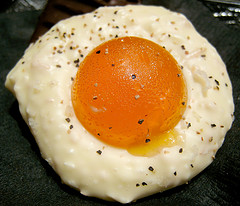
It’s summer. The perfect time to fry an egg on the sidewalk. Or, if that proves too taxing, just flop onto the grass and watch all the little invertebrates toiling away: an ant carrying a crumb or a seed, a beetle scurrying over grains of sand, a grasshopper leaping. Beneath the surface is a vast city of small creatures: insects, spiders, springtails, nematodes, earthworms, lichens and fungi, and as many as 10,000 to 50,000 species of bacteria per gram of soil.
Ecologists spend a lot of time studying soil organisms: according to the United Nations Food and Agriculture Organization, soil stockpiles 1,500 gigatons of organic carbon, more than Earth’s atmosphere and all the planets’ plants. We’re not the first to study the significance of the smallest among us: back in the 16th century, English poet Sir Edward Dyer saw that even ants and bees play their role in the world. Here is his wonderful poem on the topic:
“The Lowest Trees Have Tops”
The lowest trees have tops, the ant her gall,
The fly her spleen, the little spark his heat;
The slender hairs cast shadows, though but small,
And bees have stings, although they be not great;
Seas have their source, and so have shallow springs;
And love is love, in beggars and in kings.
Where waters smoothest run, there deepest are the fords,
The dial stirs, yet none perceives it move;
The firmest faith is found in fewest words,
The turtles do not sing, and yet they love;
True hearts have ears and eyes, no tongues to speak;
They hear and see, and sigh, and then they break.
Note on the poet: Sir Edward Dyer (1543-1607) was an alchemist and a courtier to Queen Elizabeth the First, who sent him on missions to spy on Denmark and the Netherlands. He never published his poems, and only a few can be firmly attributed to him. Among them are My Mind to Me a Kingdom Is, in which the poet contemplates his brain.
Image courtesy of Charles Haynes
Thank you for bringing this poet’s work to my attention. You are magnificent, and I salute you! —Joe
Wow. Thanks, Joe!